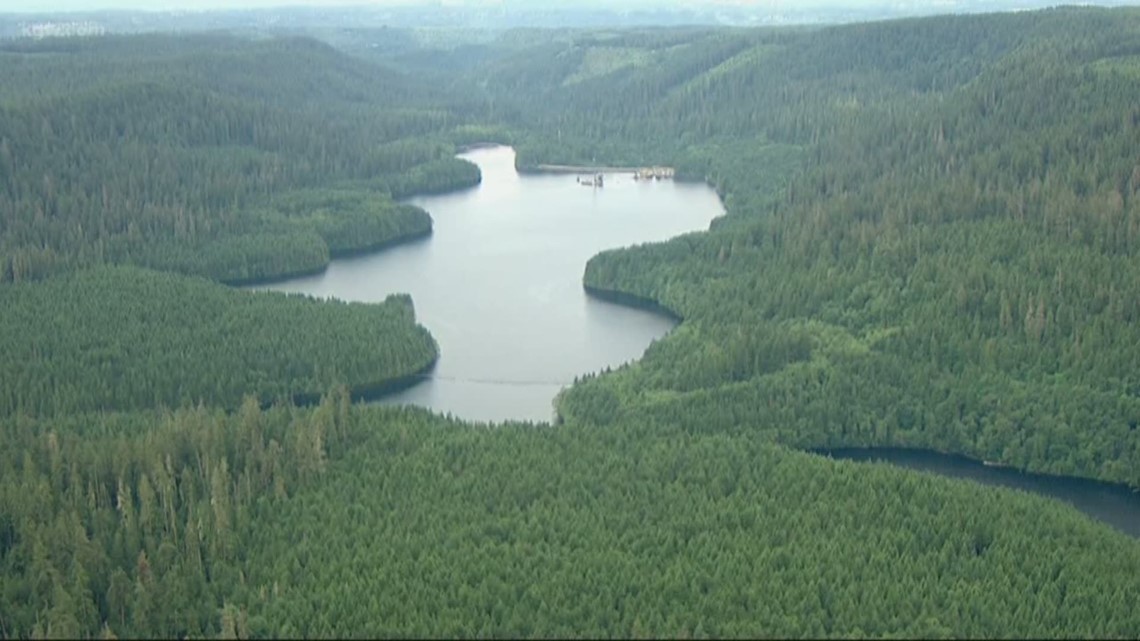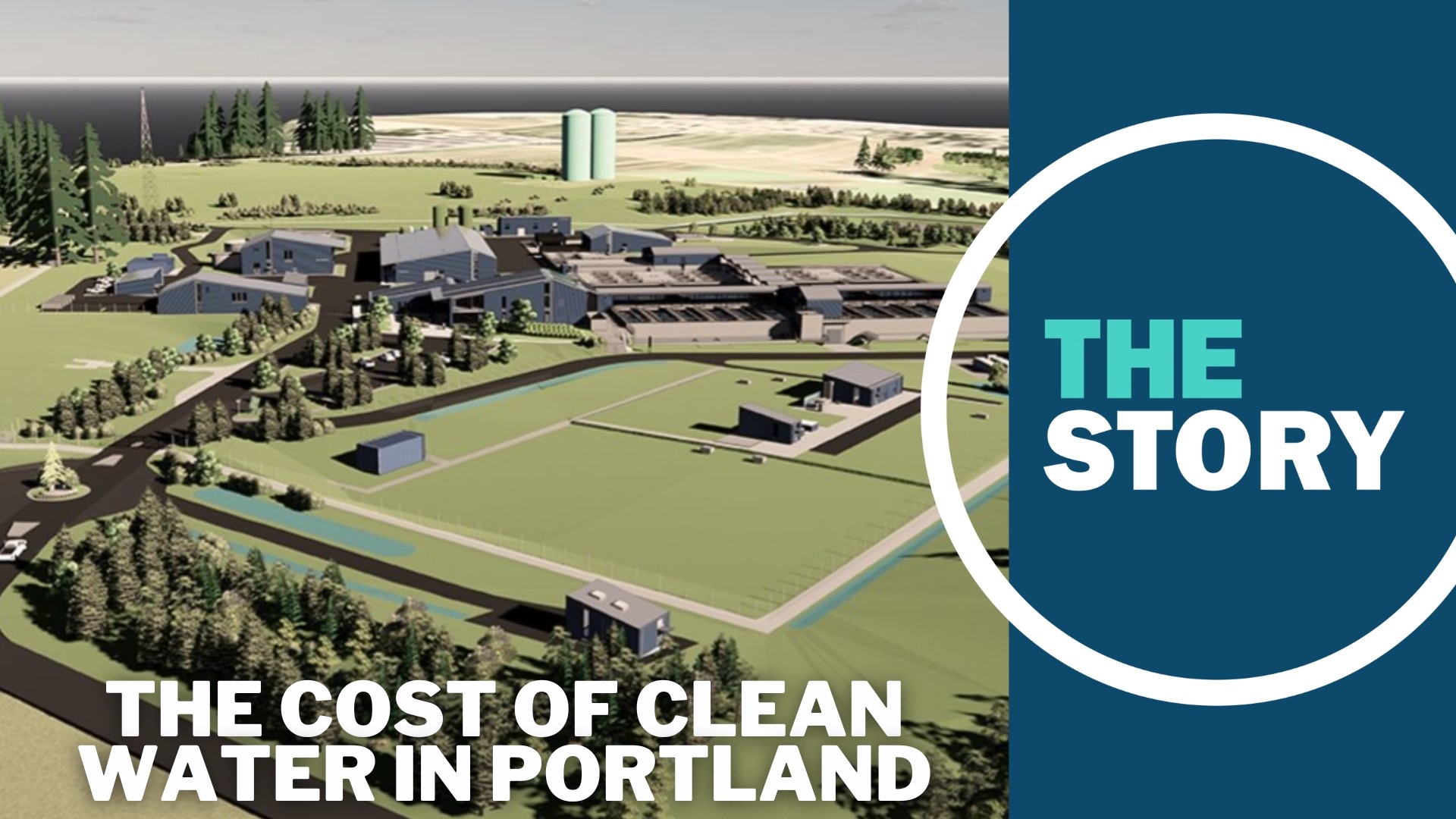PORTLAND, Ore. —
The price of the water filtration plant Portland is aiming to build has gone up. Again.
The plant was first proposed in 2017 at a cost of $500 million. In 2019, it went up to $1.4 billion. Last year, the number was $1.8 billion.
On Wednesday, Portland City Council approved a plan to build the 50-acre plant in rural eastern Multnomah County with an estimated price tag of $2.13 billion.
“We understand the pain that brings,” said Jodie Inman, chief engineer for the Portland Water Bureau. "We continue to have many processes in place to be able to manage those costs and make sure that we're spending every dollar that the public gives us efficiently and in the best way.”
There are several reasons the costs keep escalating, Inman said, many of which may sound familiar. Inflation, supply chain issues and labor shortages have all impacted the bottom line.
But Portland is also competing with other municipalities when it takes bids for large infrastructure projects.
“There is just a lot of work out there right now, a lot of big projects in the region and nationally," Inman said. “We see that increased competition, and that resulted in getting some higher bids and that's really what we see in this recent cost increase.“
Complicating things further, the city is facing stiff opposition from residents who live near where the plant would be built, which has caused delays, and there’s a hard deadline of September 2027 to get the plant fully up and running.
The most recent price hike was first reported by The Oregonian/OregonLive.
Inman said that construction should begin soon and water rates shouldn’t go up for Portlanders, beyond the rate increases approved last year.
“We are hoping to break ground in the next couple of months,” Inman said. “We are just awaiting final permits for the county.”
A costly time crunch
To understand how we got here, you have to go back to 2006. That’s when the Environmental Protection Agency issued the Long Term 2 Enhanced Surface Water Treatment Rule, which requires water districts to treat surface water for contaminants.
Portland gets its drinking water from Bull Run; a pristine, 100-square-mile watershed on the western flank of Mt. Hood that's been providing clean water to the city for more than 100 years.


The water was so clean, in fact, that the city was given an exemption from the rule until 2017, when routine testing showed the presence of a nasty pathogen, cryptosporidium, in Portland’s drinking water.
City councilors had a few treatment options to consider: ultraviolet light, used by several other large cities like San Francisco and Seattle, and ozone. Both deactivate cryptosporidium, but neither remove the pathogen or anything else from the water.
The city chose filtration because it offered several other upsides, according to David Peters, program director for Bull Run filtration improvements with the Portland Water Bureau.
“Filtration allows us to provide a greater level of resiliency in our water, to protect us now and into the future from things like turbidity events. When we have rain storms and we get mud into the water, we’ll be able to take that out, whereas now we might have to turn our system off,” he told KGW last year.
The city entered into a compliance agreement with the Oregon Health Authority, promising to begin treating its drinking water by the 2027 deadline.
And they chose a site southeast of Gresham, which was purchased by the city in the 1970s, because it can be gravity-fed from Bull Run — no pumps required — and it was close to existing water infrastructure already in place.
‘They're not going to meet their deadline’
Lauren Courter leaves near the proposed site and is part of the Cottrell Community Planning Organization, which counts some 2,000 households and 200 businesses, mostly in agriculture, among its members.
She and many residents in the rural area off Carpenter Lane have been opposed to the location of the plant from the start.
They’ve met with the water bureau to voice their concerns about construction traffic and noise. They’ve testified at county land use hearings and, after the county approved of the project, they filed appeals.
“We filed our appeal and it's still in process,” Courter said. “We expect a decision in eight months or so.”
Courter thinks the city chose the site because they assumed there would be less opposition than other places that were considered, like Powell Butte.
“They chose Carpenter Lane because they felt like they could get through the process quicker and avoid delays, maybe because we're a bunch of country bumpkins and they didn't expect us to fight back,” she said, adding that her group is prepared to sue if their appeal is unsuccessful. “The delays are coming. They're not going to meet their deadline.”
And that's part of what's driving up costs of the project, Inman said.
“It's impacted it very significantly," Inman said. “We appreciate it's a public process and everybody has the right to participate and their voices to be heard.”
When Inman said as much at the city council meeting, Courter was put off.
“Jodie Inman got up there and said, ‘We have to keep moving forward. We have to do this. We cannot delay it anymore. If we delay, this is going to cost us more,’ and it felt very hurtful to sort of blame us ... because we're fighting back” Courter said. “It's fascinating that the city is OK with this.”
Rates were going up anyway
So how much is this extra $300 million going to cost Portland ratepayers?
Inman explained that rate increases were approved last year. Water rates will increase by 7.9% in 2024 and will go up 8.1% each year after that until 2030.
The cost of the filtration plant was built into those rate increases, so while rates will go up, they won’t go up more than the approved they were scheduled to.
“We've already accounted for it,” Inman said.
The bureau will have to come up with that $300 million from somewhere, however. To do that, they’ll be putting off some seismic upgrades, delaying other capital projects and will likely have to dip into cash reserves.
But with so much uncertainty remaining — from labor costs to inflation to ongoing opposition from local residents — Inman would not say definitively that costs couldn’t go up again.
“I always hope it's the final estimate,” she said.

